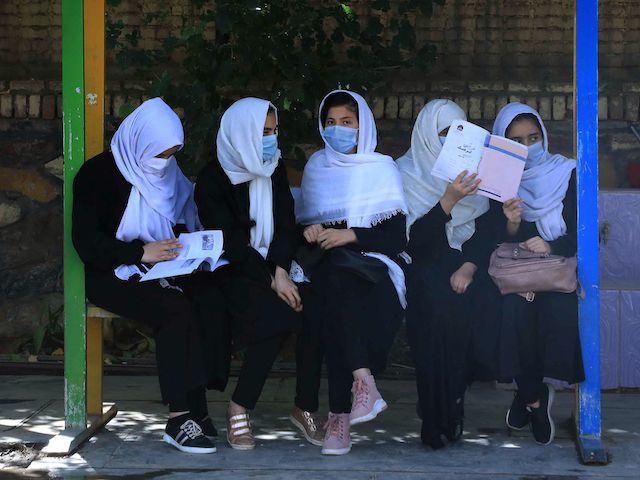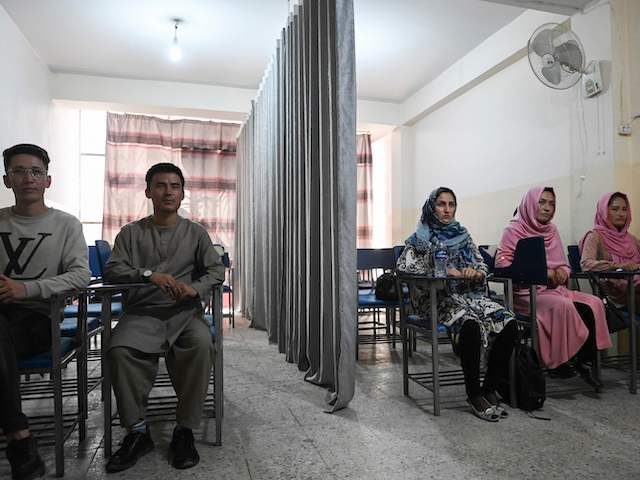Women in Afghanistan may continue studying at universities, including at the post-graduate level, but classrooms must be gender-segregated and enforce an Islamic dress code, the newly formed government of the Taliban terror group announced Sunday.
The Taliban’s higher education minister, Abdul Baqi Haqqani, laid out the new policies regarding women at a news conference on September 12 in Kabul.
Haqqani said hijabs, or head coverings, will be mandatory for female university students. He did not specify if this meant the headscarves would need to be worn so that they also conceal a woman’s face, or if separate veils, known as niqabs, would be required.
“Gender segregation will also be enforced,” Haqqani said on Sunday.

Students attend a class bifurcated by a curtain separating males and females at a private university in Kabul on September 7, 2021, to follow the Taliban’s ruling. (Aamir Qureshi/AFP via Getty Images)
Reiterating his point, the higher education minister added, “We will not allow boys and girls to study together. We will not allow co-education.”
Haqqani further stated that the subjects taught in universities would be “reviewed” by the new Taliban government, though he did not provide details of the planned assessment. The hardline Sunni group is ruling Afghanistan through a system of Islamic law, or sharia, and may seek to omit secular materials from university-level curricula.
Haqqani said on Sunday he wants graduates of Afghan universities to “be competitive with university graduates in the region and the rest of the world,” though he did not elaborate.
Haqqani first revealed that the Taliban government would segregate women from men at the university level late last month.

Students attend their classes after private universities were reopened in Kabul on September 6, 2021. (Aamir Qureshi/AFP via Getty Images)
“Afghan girls have the right to study but they cannot study in the same classrooms with boys,” Haqqani said during a meeting with officials of public and private universities in Afghanistan on August 29.
He further claimed that the Taliban’s new government would provide “a safe educational environment” for female Afghan students, according to Afghanistan’s Tolo News.
Afghanistan’s new higher education policy “signals a change from the accepted practice before the Taliban takeover,” according to the Associated Press. “Universities were co-ed, with men and women studying side by side, and female students did not have to abide by a dress code.”
Despite the freedom women were allowed in terms of their clothing choices pre-Taliban, “the vast majority of female university students opted to wear headscarves in line with [Islamic] tradition,” the AP noted on Sunday.

Schoolgirls sit at the schoolyard in Herat on August 17, 2021, following the Taliban’s takeover of the country. (Aref Karimi/AFP via Getty Images)
“In elementary and high schools, boys and girls were taught separately, even before the Taliban came to power. In high schools, girls had to wear tunics reaching to their knees and white headscarves, and jeans, makeup and jewelry were not permitted,” the U.S.-based news agency recalled.
The Taliban terror group seized control of the Afghan national capital, Kabul, on August 15, deposing the city’s U.S.-backed government within hours. The jihadist group then declared itself Afghanistan’s legitimate and sole ruler, renaming the country the Islamic Emirate of Afghanistan. The Taliban previously ruled Kabul, the Afghan seat of government, from 1996-2001.

COMMENTS
Please let us know if you're having issues with commenting.